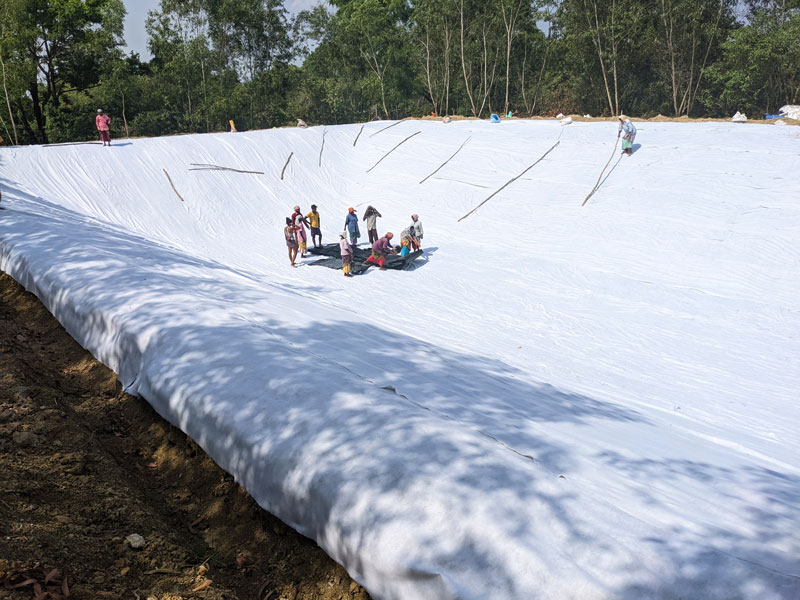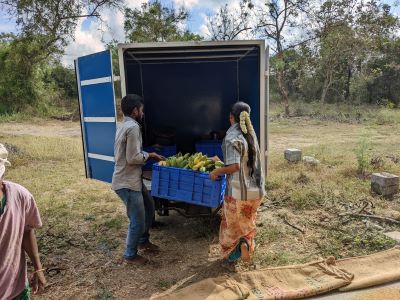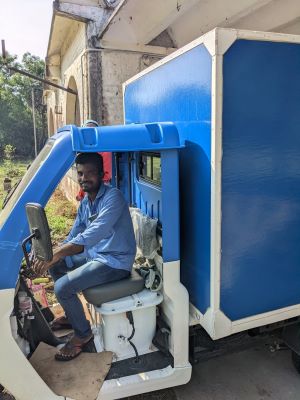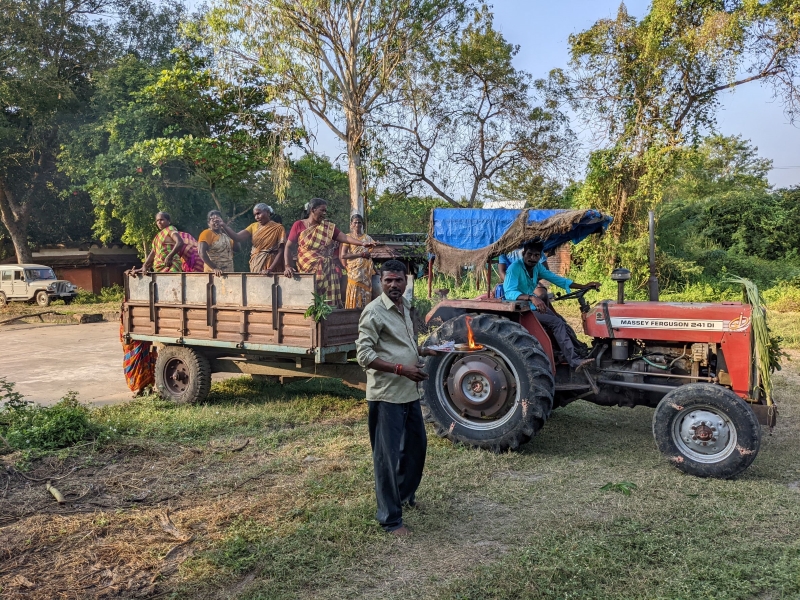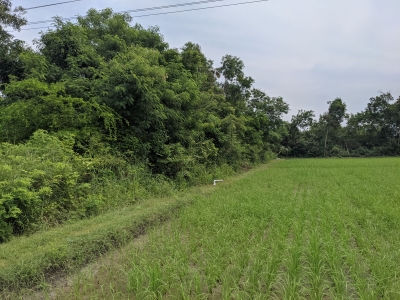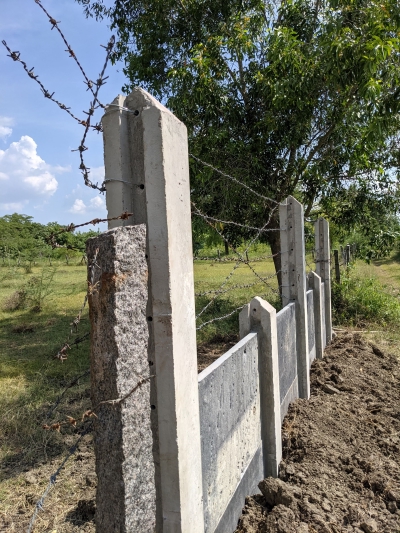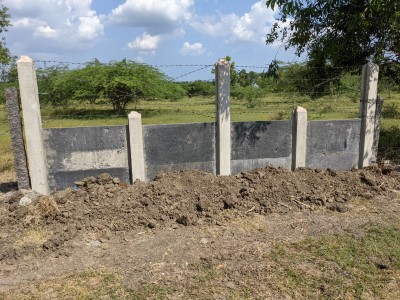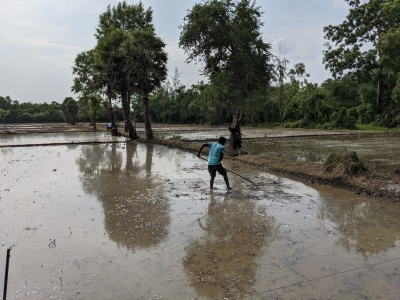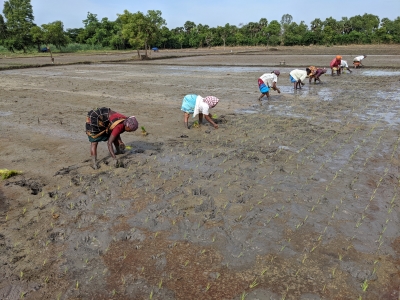As mentioned before in these blogs, summertime is the best time for the farm to get projects done to expand and improve Annapurna’s capacity.
In the last several weeks we have picked up the unfinished work of a project which was started in 2018 when we got liberal funding to expand our rainwater harvest capacity. In that year we doubled the water capacity of the irrigation ponds to approximately 50,000m3 and with this we could expand the rice growing area to around 20 acres and started to grow bananas on a more serious scale. We also could start to grow more fodder for the dairy. All this while tapping very little into the groundwater.
Digging such a big hole gave us a lot of soil to dispose of. We realized that the soil was a wonderful material to build a hill which could contain an elevated pond. What we did not realize was that this was not just a little extra work but quite a big job to get done. It also needed a serious budget to be able to do all this work but again there was a donor who wanted to help manifest this project and we are very thankful for this.
First, it needed lots of work to prepare the site, then find a reliable pond-liner dealer, purchase and install the material and finally protect the pond from the wildlife which will be attracted to the water body. About protection, you see the material will get punctured by the sharp hooves of deer and pigs, and the animals will probably drown since the wet liner is very slippery and animals might not be able to scale the sloping sides and come out of the basin.
Since it took us several years after creating the hill and getting to the job of lining the elevated pond, the site had become a virtual jungle. It was a lot of work to clear all the vegetation by hand since it was not possible to get a JCB into the area. The sides were too steep to work and the machine would disturb the soil too much.
The good thing was that having gone through several monsoons, the hill soil had stabilized well and we had solid ground to work on. After clearing the site of the vegetation and removing all sharp objects like small limestone nuggets, roots/thorns and what not, we called in the company who had supplied the liner material. Two days before they came, we had a nice rain, but which gave us some extra work because the sides of the pond had been damaged.
I Pictures: Left – digging a trench around the pond. Right – after rain, the sides eroded again.
Then when they did come on a Saturday morning (from Bangalore) both the technician and helper had probably visited neighboring Sedarapet, which is part of Pondicherry, where the laws for alcohol use are more liberal. The helper could hardly stand on his legs and the technician was in a very apathetic mood.
We still managed to put down the geo textile to protect the liner material but when the real work started it did just didn’t feel right and we stopped the work for the moment. We were happy when the company was very responsive and apologized profusely and sent us another technician on the following Monday. The work to put down the liner was very challenging; the material is very heavy, and it was very hot down in the pond with temperatures between 45-50 degrees and the material itself too hot to touch with bare hands. It was a full day work with around 15 people holding and stretching the material.
Right now we are doing the finishing work of tucking the sides of the liner into the trench which was dug around the pond. We could only do this after filling the pond with water (approx. 1200m3) to let the liner settle according to the pond shape. Then we must finish the electric fence to protect it from wild animals, but also for people who might slip in and not easily get out of the water.
In the season to come we have to see how make best use of this elevated water body. It will surely be very helpful to create a buffer stock of water during the rice growing season because 3-phase electricity is very erratic and comes often outside working hours. We have to see how much pressure we get at the outlet which is quite far out in the fields. Depending on that we can use it in different ways on different crops.
The water body up there gives a wonderful feel and we are quite excited to explore the various possibilities, especially after such a long process.
In the bigger picture this storage basin makes the farm function more efficiently, and we are more resilient and less vulnerable to the erratic power supply of the grid. Having this upper pond, we can start dreaming of filling it using solar pumps. This will make the whole water scenario of Annapurna Farm very sustainable and independent of the grid.















